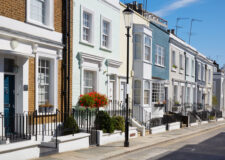Robert Nemeth finds John Constable’s former home

Sillwood Road resident Shan Lancaster was overjoyed when her new neighbour, Peter Harrup, joined her search to properly identify John Constable’s Brighton home.
“Sober’s Gardens was also known as Western Cottages and was renamed Sillwood Road during the 1870s”
Something like 200 of Constable’s works of art were created during the time that he spent in Brighton with his family in 1824-8. One painting that particularly stands out is that of the Chain Pier behind a bustling beach and choppy sea. He was known to have lived at 9 Sober’s Gardens from letters that he wrote during his stay in what was by then a thriving resort. Sober’s Gardens was also known as Western Cottages and was renamed Sillwood Road during the 1870s.

Key to the story is a painting from 1824 by John Constable that shows nearby Western Terrace and Gothic House alongside Western Lodge from a viewpoint that no longer exists. Western Lodge features what appears to be a balconied terrace above a colonnade and pedimented porch. It was built in around 1817 to the designs of famous local architect Amon Henry Wilds and later demolished. Wilds also designed Western Terrace, and Charles Augustin Busby designed Gothic House.
It was Wilds and Busby who designed Kemp Town for developer Thomas Kemp. Kemp’s sister was Mrs Ann Sober and it was on the gardens of her house, Western Lodge, that Sillwood Road was built. As the western side was built after Constable lived in Brighton, he was able to paint Western Terrace and Gothic House from his home studio on the east side with uninterrupted views.
The mystery of Constable’s home was solved when it was firmly established by Shan that an artist called John James Masquerier lived at what is now 10 Sillwood Road. Masquerier was a famous painter at that time and known to be Constable’s next-door neighbour. This confirmed that Peter’s home, 11 Sillwood Road, was the home of John Constable. As an artist himself, who uses what was no doubt Constable’s own top floor studio, Peter was thrilled.
Number 11 Sillwood Road has changed much since it was built in the early 1820s. The three-storey semi-detached house, along with its adjoined neighbour, were extensively modified in the 1860s when the roof was raised, gables added, alleys built over, and Tudor-esque facades introduced.
To celebrate Constable’s time at 11 Sillwood Road, a blue plaque has been installed. It was unveiled in July by artist Richard Constable – the great-great-grandson of the great man himself.





















